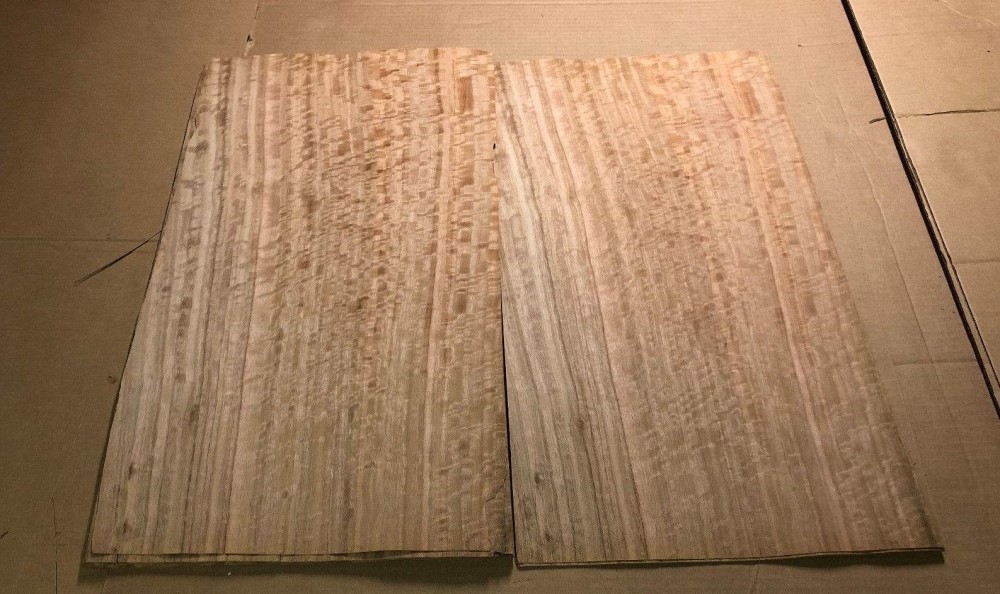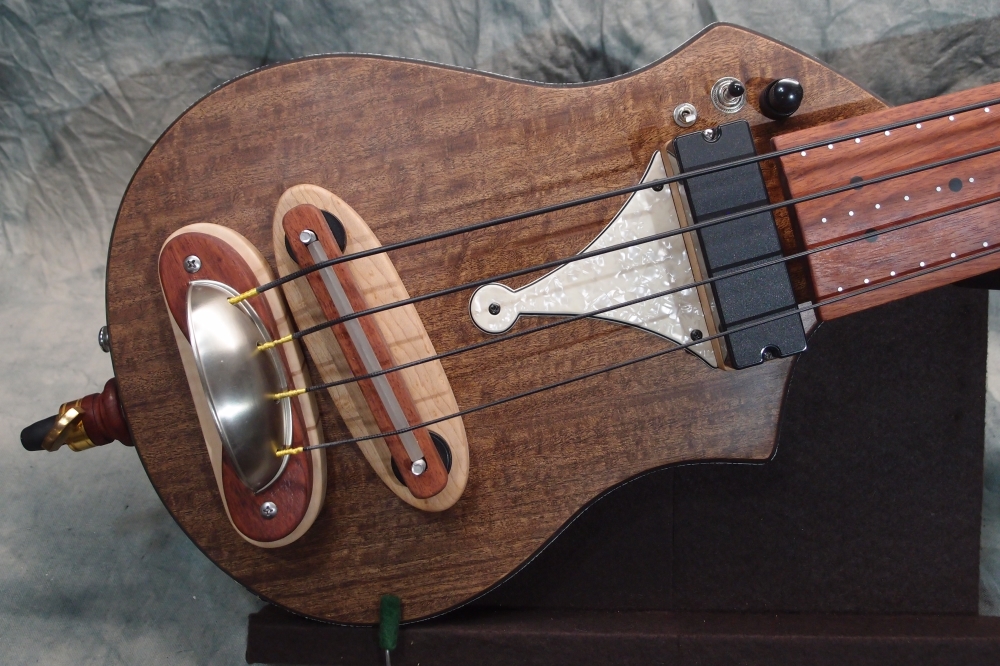Veneers

These are some veneers I ordered. The first is red gum, the second is beeswings eucalyptus. Both of these are mighty tonewoods and were very inexpensive. I'm going to see how they laminate over masonite. That could give a woody surface with a neat masonite edge, much like the old Danelectros, without the need to cover up a rough plywood edge with plastic binding. Masonite actually looks pretty cool under a clear coat as well, and it is stainable.


The eucalyptus will cover a face in one piece. The red gum takes two pieces, but I can arrange them to get a stripe down the middle. I plan to apply them over masonite. That will give me a woody finish with a clean masonite edge, as opposed to the rough ugly edge you get with plywood. The edges are a bit crackly, so I taped them all up. These are very thin veneers, and not paper-backed, so they should work well for my plan.
I am not aware that the tonal properties of either of these woods have ever been properly explored.
Here is a terrific tutorial on applying veneer:
There are several other methods of applying veneer, but this one works the best and is the only one I use.

I made a veneer press from some old pieces of 3/4" MDF and baking parchment paper. I squared the two pieces to each other and straightened the edges, so I can use them for trimming as well. The clamping cauls are 1x2 pine, with pieces of cardboard attached for pressure in the center. I'm gluing a piece of eucalyptus. The figured eucalyptus looks great in pictures, but in person, it leaves something to be desired. It is wavy and crackly, and may not be suited for luthiery, or anything. I'll find out tomorrow. I'm crushing the hell out of it right now. Hopefully, heavy clamping and slow drying will keep it from cracking, and maybe even flatten it out some.

This is the piece I made last night, sanded and stained. It came out nice and flat. I made a few modifications to the press to make it easier to use. The lower cauls are now an assembly, with legs to stand it up and make it easy to apply the clamps. There is another piece in the press right now. After yesterday's double failure, I was a little worried, but this method is working great. The first piece got about 12 hours of press time, which seems to be enough.
This press is made from scrap and $5 worth of 1x2. Plywood would work as well, but these two pieces of MDF would have ended up in the trash otherwise. Next up is to figure out how to work with the veneered parts without having splinters of veneer come off all around the edges. Sanding should be ok, but routing is always risky. Fortunately, I have the two failures for test articles.

A touch-up painting kit like this is very useful for applying glue to large areas. The kit comes with a tiny roller and tray.
In between jobs, I put my little glue roller in the fridge, and it was fine. Very little waste with this method. I applied the glue fairly liberally on the masonite and then ran the almost-dry roller all over the veneer. Veneer curls badly when it is wetted on one side, and you're only supposed to put the glue on the substrate, but with the waviness of this particular veneer, I wanted a little extra insurance. A misting of water on the other side helps uncurl it.














Questions or Inquiries?
Just want to say Hello? Sign the .